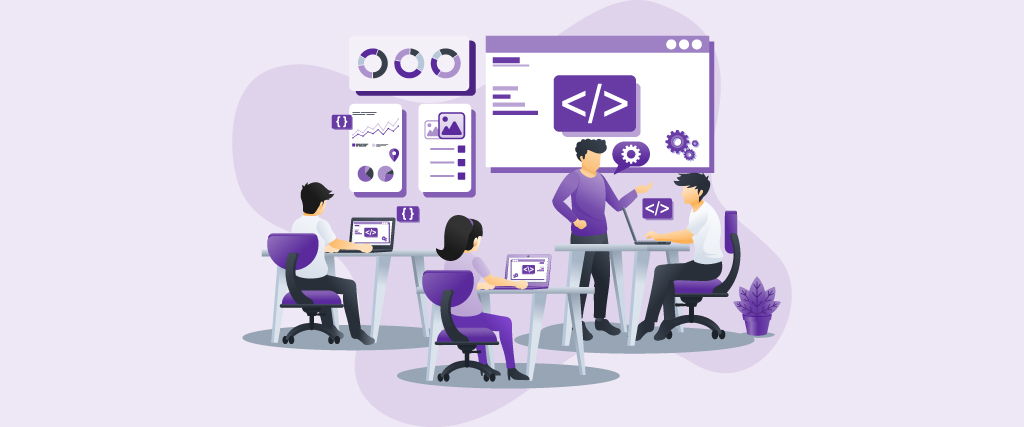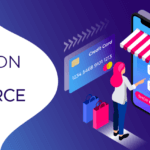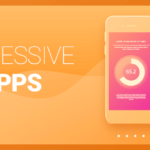Software Development Trends: The pandemic has forced companies and organizations to have their employees work remotely. This has increased demand for the digital workplace. Well, the phase of remote working isn’t new and is usually used by freelancers and entrepreneurs. Though the pandemic might vanish into thin air at some point, the impact shall live on for years.
As we’re adopting the new work environment, experts predict the most promising trends in the IT industry. In this article, we will discuss the cutting-edge software technologies and trends that are going to gain more power in the software industry in 2021.
But what exactly has 2021 stored in for us, when it comes to technology and software development? Let’s uncover the trends that are going to shape software development this year.
Implementation of RPA bots during the development process
Automation is thriving at a pace like never before across all sectors globally. With a limited workforce to continue operations, sectors like BFSI and healthcare have automated the redundant documentation, to apply human-like skills for important and urgent tasks. Due to its robust system, the incorporation of RPA will strengthen software development in 2021.
Big data analytics in software development
Businesses and organizations across the globe have been utilizing big data to gain actionable insights. With Hadoop and Apache Spark usage, the data analysis field across software development will be enhanced. In the future, big data analytics will foster the software development spectrum.
Integration of AI into the Software Development Trends
Artificial Intelligence is evolving at an unstoppable pace, almost exploding for the last five years. These days, machines can think using their intelligence and perform tasks that were initially restricted to humans.
AI has various subsets such as machine control, deep learning, machine learning, and the neural network that have individually grown to certain heights over years. We have seen an increasing surge in the usage of chatbots in web and mobile app development.
They have replaced human assistance and customer support. The use of AI & machine learning in native app development has enhanced customer experience and enabled users to navigate easily through them.
Integrating Blockchain
Blockchain became the buzz topic and is still gaining momentum across different sectors. It ensures transparency and is termed a digital ledger. Utilizing Blockchain in software development processes will ensure secure and simplified recording of transactions. And this makes it strategically important for businesses in all industrial sectors.
A large number of companies are eager to leverage this technology. The software developers are finding new and interesting ways to create custom software development to implement it.
The Internet of Things
The rise of IoT is not going to stop any time soon. Smart home systems, Bluetooth trackers, IoT devices for manufacturers, plants, smart wearables for fitness and healthcare, car gadgets are all based on IoT technology.
Businesses integrate IoT, AI, and big data for maximum productivity. By incorporating IoT sensors in the software development process, engineers will be able to scale their programming skills hassle-free.
Cloud-based Solutions – Software Development Trends
Owing to the remote working norm, cloud technology has seen an unprecedented increase in its users over the past year. It is heavily deployed across all sectors. In the foreseeable future, software development will be more cloud-centric, with all the data during the development processes getting stored in the cloud.
Progressive Web Apps
When comparing web apps to websites, the former one can offer broader functionality and top performance due to embracing platform-specific hardware support, while the latter ones are easier to access. Progressive web apps (PWA) have become a great compromise between easy access and first-class performance.
Users get a full-fledged and enhanced experience with less data usage and shorter loading time. These apps transfer the app-like features into the browser window, hence marking a revolutionary change in web development. A lot of world-renowned platforms- including Forbes, Pinterest, Twitter, and AliExpress have already adopted PWA.
Low-code Development
Previously, it took large, dedicated teams of software engineers and developers to create any type of digital solution. And solutions were super costly and SMBs could barely avail such solutions. However, with low-code development trends, we can simplify complex programming languages, and businesses of all sizes can leverage smart digital solutions.
Low-code platforms have the potential to revolutionize the market, avoid the extra manual work, and offer simple and subtle interfaces to help people build new apps at a low investment of time, money, and skills.
Continuous Integration and Deployment
This practice allows more flexibility, cuts down the cycle of feature delivery, makes bug fixing more often and effective in software development trends. Continuous delivery implies apps get into production for thorough testing, while continuous deployment updates them automatically.
It enables software development teams to improve functionality consistently and deliver products faster. No wonder, more software development companies are waiting to get their hands on this approach to ease their work.
Conclusion
The above article reflects on a few software development trends that are escalating towards success at a tremendous rate. Businesses leverage these technologies to attain higher stability, security, and performance.
This also means that software development is getting more and more optimized and sophisticated. Let’s keep a check on the evolving advancements and try to implement them in every walk of our lives.
Read More: TOP 5 FARM MANAGEMENT SOFTWARE THAT CHANGES THE FACE OF AGRICULTURE IN 2021
























